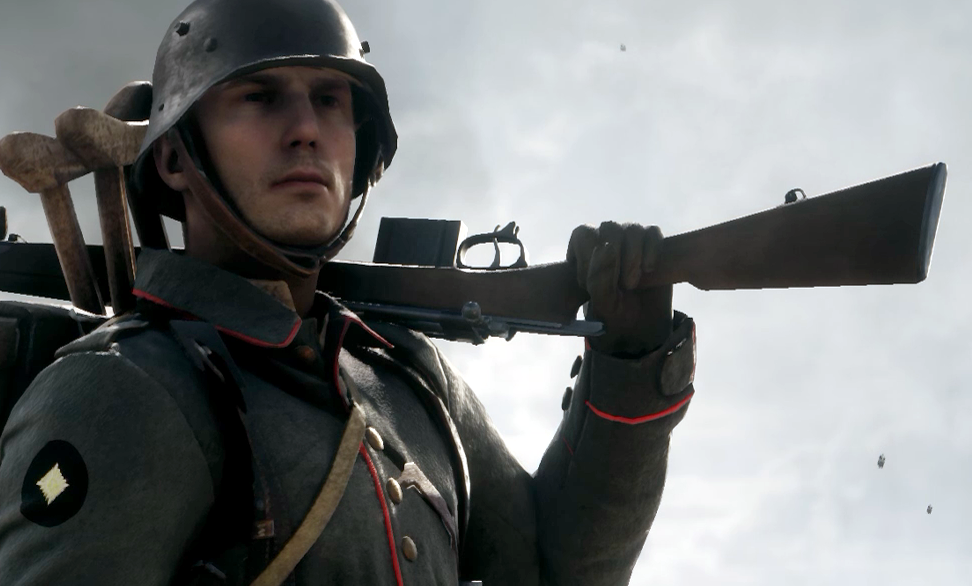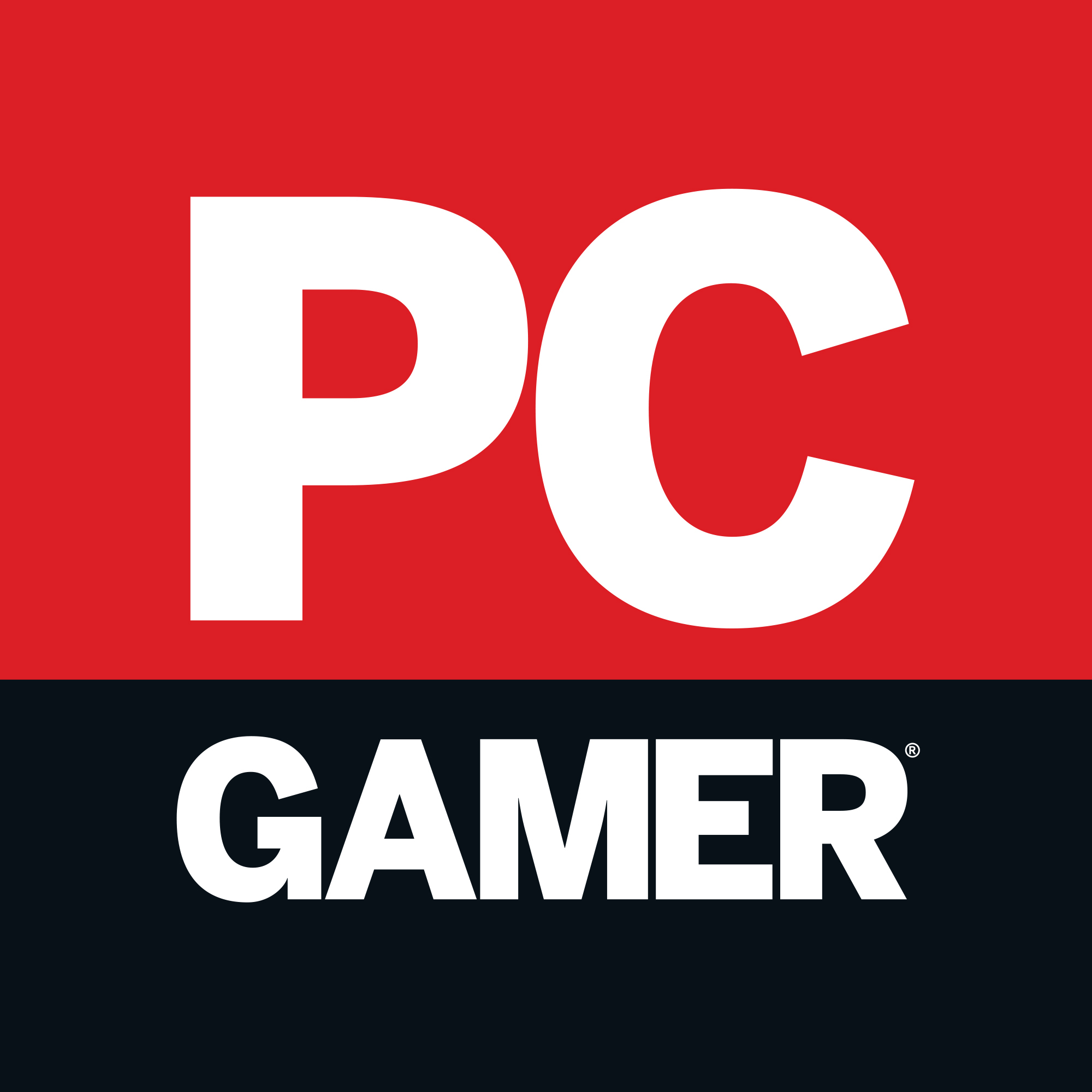
We’re hours into the Battlefield 1 alpha, EA and DICE’s trip back in time to WW1, sort of. Historical accuracy isn’t its intent, primarily using the backdrop and technology as thematic tools in Battlefield’s signature sandbox multiplayer. Since we’ve already let you know what we think of it—the alpha and E3 builds are virtually the same—and shared a ton of gameplay footage, it’s time to take a closer look at the Battlefield’s building blocks, starting with the main playable classes (not including the tanker and pilot classes) and their primary firearms.
Below, Tyler and I (James) embedded gifs of all the primary class weapons available in the alpha (more are coming in the final release) and gave a quick rundown on their functionality, personality, and how they affect their class role.
But first, a quick rundown of each class and their duty:
Assault: the frontline, pushing towards enemy positions and dealing primarily with infantry.
Medic: healing class, comes with deployable medkits and revive syringes. Keeps frontline and.or backline afloat.
Support: lays down suppressing fire, enables infantry to cross open terrain. Comes with deployable ammo refills and anti-tank mines.
Scout: long distance support that calls out enemy positions. Great for harassing backline support and countering other scouts.
Assault
Automatico M1918
This submachine gun is a fairly routine Battlefield weapon that does a lot of damage quickly, but with a wide spray and magazine that empties in just a few seconds. In steady hands, it’s a great tool for mid-range combat, but doesn’t really change the assault role in a significant way. The overhead magazine and rapid chamber reset of the bolt on the right side are an authentic touch that adds character to an otherwise routine weapon. — James
The biggest gaming news, reviews and hardware deals
Keep up to date with the most important stories and the best deals, as picked by the PC Gamer team.
Model 10-A
Sneaky assault players will love the Model 10-A pump action shotgun. It’s almost useless in the majority of Battlefield’s wide open spaces, but if you stick to cover and flank unnoticed, it’ll drop a soldier with one shot. It’s also great for defense. If the enemy is assaulting your position, hole up in a house or bunker with one of these and take them by surprise. Shots look like a barely controlled explosion, which isn’t authentic, but Battlefield 1 doesn’t seem too worried about realism. The 10-A was rarely used in WWI anyway, as most opted for the Winchester Model 1897. — James
MP 18
Say hello to the first SMG ever used in combat, a weapon that made such an impression on the Allies that further study and manufacture of such weapons by Germany was banned in the Treaty of Versaille. But the MP 18 slipped through those cracks, and became the basis for most SMG design until the 60s. In Battlefield 1, it functions as a mid-to-close range weapon, originally meant for trench warfare (but it’s still fun to fire on top of a zeppelin). It uses a snail drum magazine that also functions as a grip for easier reloads. There’s nothing too distinct about how it affects the assault role in BF1—the hip-firing accuracy is super high, but the damage output is super low. A mobile, accurate, and reflexive player may find success with it. — James
Medic
Cei-Rigotti
This long to medium-range automatic/semi-auto rifle wasn’t actually adopted by any nation in WWI—it was a prototype created by Italian officer Amerigo Cei-Rigotti. But Battlefield wanted a few early automatic rifles in the mix, so here we are. The Cei-Rigotti can be used at range like the other medic guns, but its fast rate of fire and automatic mode give it an obvious advantage up close. Even though automatic rifles were used in WWI (e.g. the BAR), they lend more of a WWII flavor to me, and I’ve mostly avoided them so far. Semi-auto and bolt action are where it’s at. — Tyler
M1907 SL
The bulky design and ball head pin sight can make distance shots tricky to aim, but the semi-auto M1907 is my favorite medic gun. There’s a full automatic variant, but it’s wildly inaccurate. I prefer carefully placed shots, and with a steady fire rate (fast clicking even in semi-auto mode can erratically spray bullets) this is a nasty medium-range lobber. It does well from the hip and the detachable magazine makes reloading fast. The design is a bit plain compared to BF1’s other guns, but I like the simple Winchester look. — Tyler
Mondragon
The Mondragon is a long tube of a self-loading rifle with a bit of zoom when in sights and a marksman variant with a scope. It's better at range than the M1907 or Cei-Rigotti, but partial reloads are slow and it’s very inaccurate from the hip. It fires fast enough for that not to be a big problem at very close range, as you can see in the GIF, but it won’t get you out of trouble often in tight quarters. I’d rather use one of the Scout weapons to snipe. Overall, the medic guns are a decent way to defend yourself when lying prone near a point, or coming at one from a distance, but they aren’t for clearing houses. — Tyler
Support
Lewis Gun
I love the Lewis Gun for its prototypical design—it’s so mechanical, as if it was slapped together from old machinery in grandpa’s garage. The rotating pan magazine, muzzle flash, and recoil animation give it a very tactile, heavy feel. Like most LMGs, the magazine has a huge capacity, but the Lewis Gun isn’t a huge damage dealer. It’s super accurate and great for suppressing enemy infantry, but in a one-on-one shootout, the firing rate and damage output may not be enough. — James
M1909 Benét–Mercié
Used by France and Britain throughout WWI, the M1909 Benét–Mercié is a gas-operated LMG, and it might have the best magazine animation in all of Battlefield 1 so far. I like to imagine the gun making vigorous and happy eating sounds as it fires. Free-aiming makes it recoil wildly, but aiming down the sights holds the M1909 super still, making it great for more precise observation of enemy positions and elimination of infantry. — James
Madsen MG
As the first LMG produced in mass quantities, the Madsen MG was used in official military capacities up until 1996, which makes it feel like the least surprising support class weapon in Battlefield 1. Still, the gravity fed overhead magazine gives it a bulky recognizable profile, and the jiggly handle is a nice detail. It’s made for a mobile support player since its hip firing accuracy nearly doubles the other LMGs, just don’t expect to lay down effective suppression fire or set up a defensive position. — James
Scout
Gewehr 98
The side-mounted scope is a nice bit of flavor, though it makes no practical difference—this rifle functions like other Battlefield bolt-action rifles, lobbing a glowing projectile in a shallow arc. Scouts won’t find the role much different—if you’re good, you’ll annoy the hell out of the enemy, and if you’re bad, you’ll spend the match aerating the soil—but it’s a stylish weapon, and I especially like the details on my uniform as I reload. Another note: I never once used the 'steady scope' function, as it doesn't seem like any wobble is implemented yet. — Tyler
SMLE MkIII
This Lee–Enfield can be used with a bulky scope or iron sights. The SMLE does its highest damage at close-to-medium range, but keeps its base damage for long shots. Its bullets drop off a bit quicker than the Gewehr’s, and I haven’t found a great reason to use it over that rifle other than its larger magazine. — Tyler
Russian 1895
A fast lever action rifle with a simple fine crosshair, this is my favorite of the sniper rifles. In scope it offers lots of visibility, making it good for hovering around the outskirts of a point marking and taking out invaders your teammates may not see. It does much less damage at range than the other rifles and its bullets fall off quick, so it’s not intended for cross-the-map shots like the Gewher. If you’d rather be in the thick of it instead of prone on a hilltop somewhere, this is your scout gun. — Tyler
The collective PC Gamer editorial team worked together to write this article. PC Gamer is the global authority on PC games—starting in 1993 with the magazine, and then in 2010 with this website you're currently reading. We have writers across the US, UK and Australia, who you can read about here.


